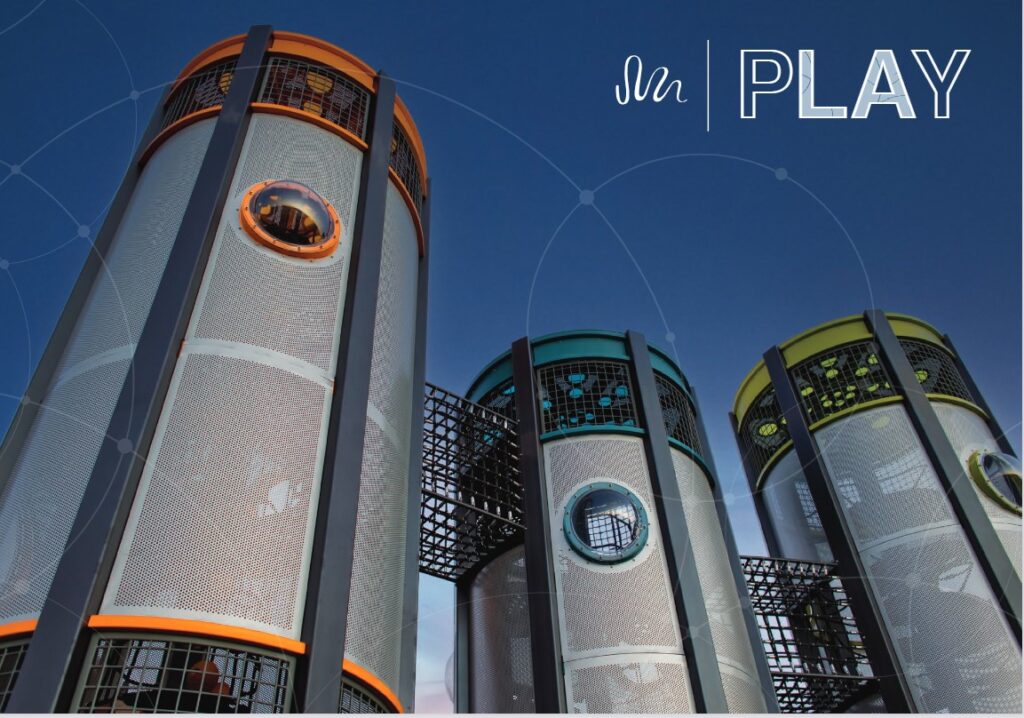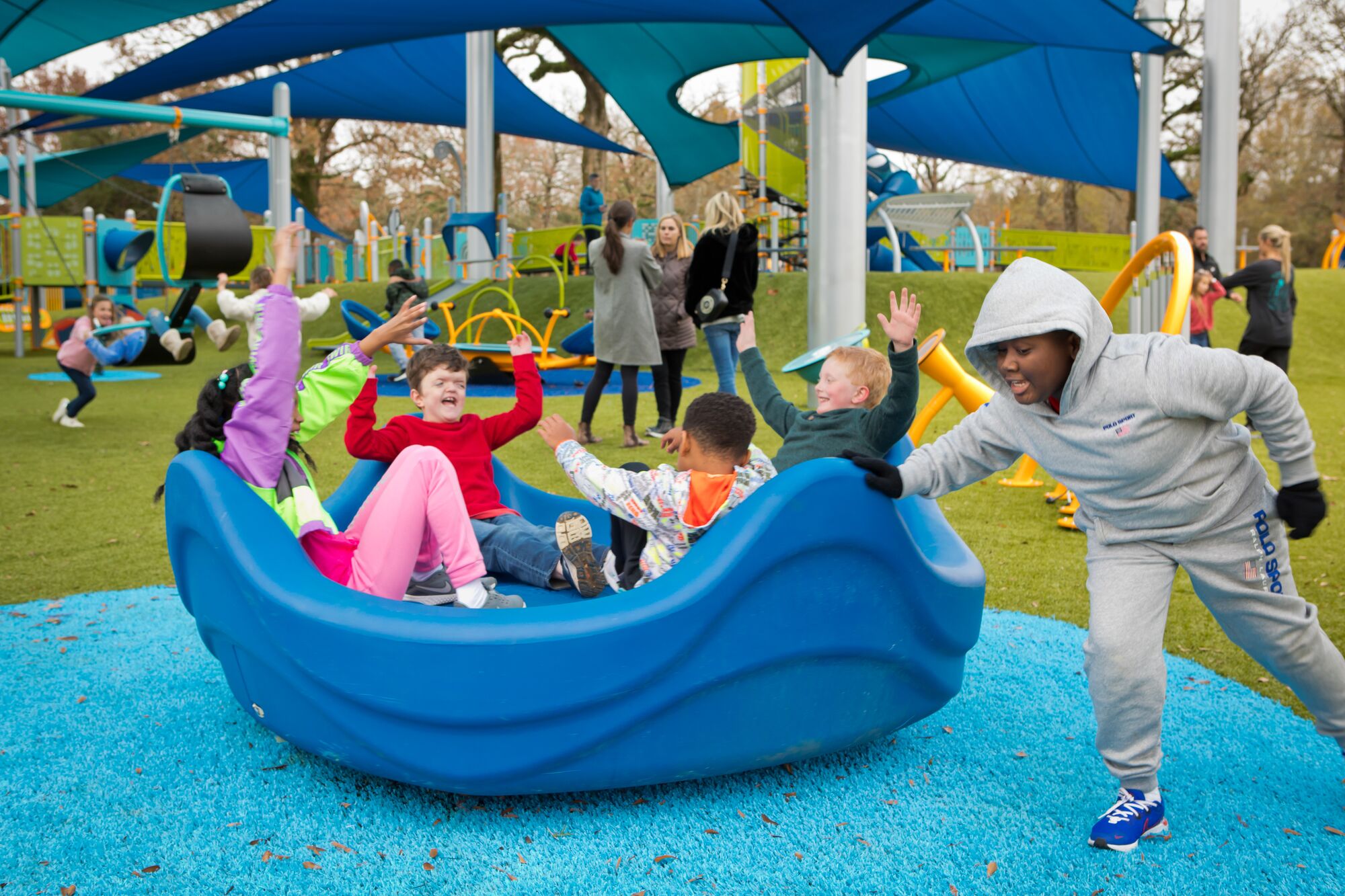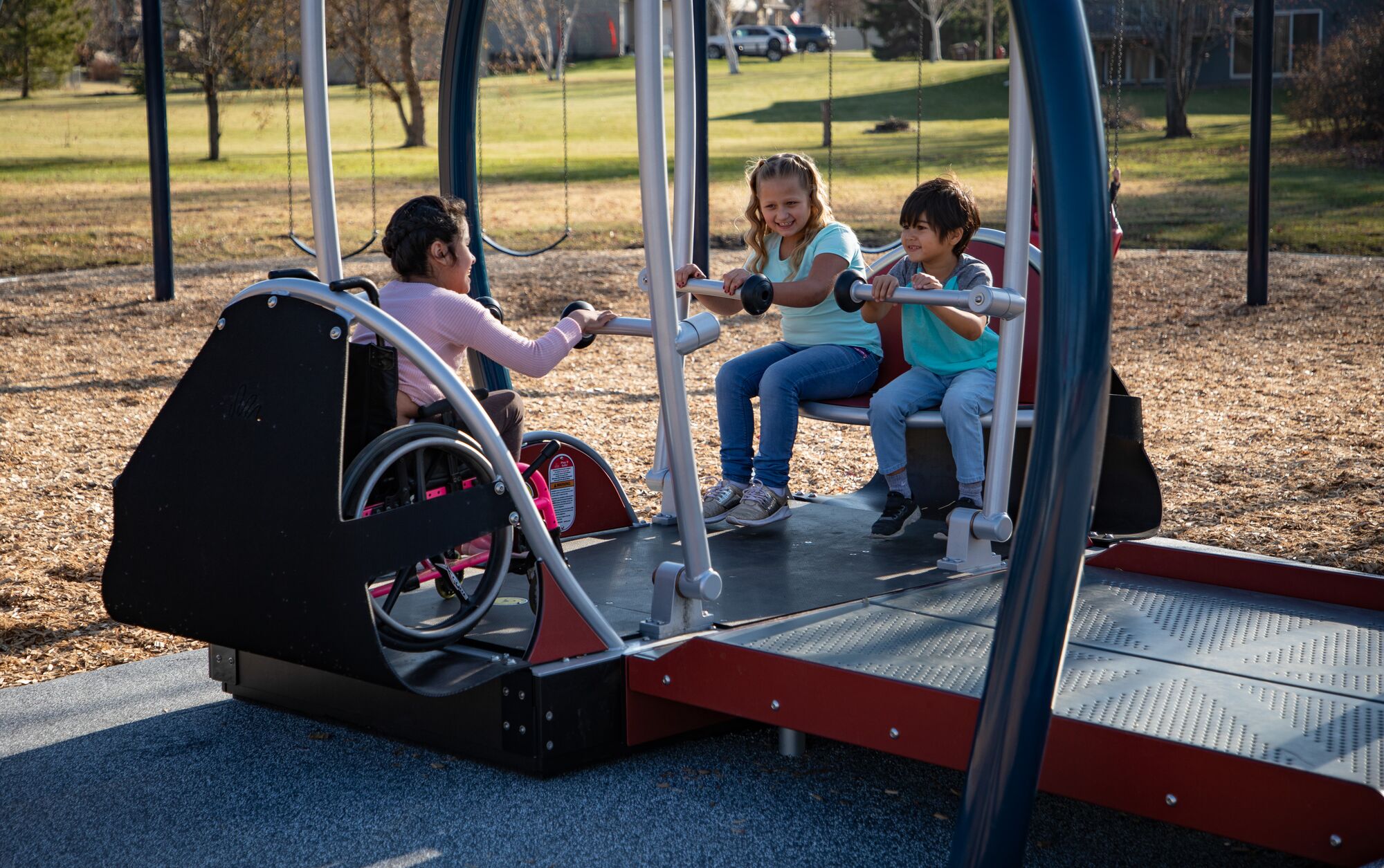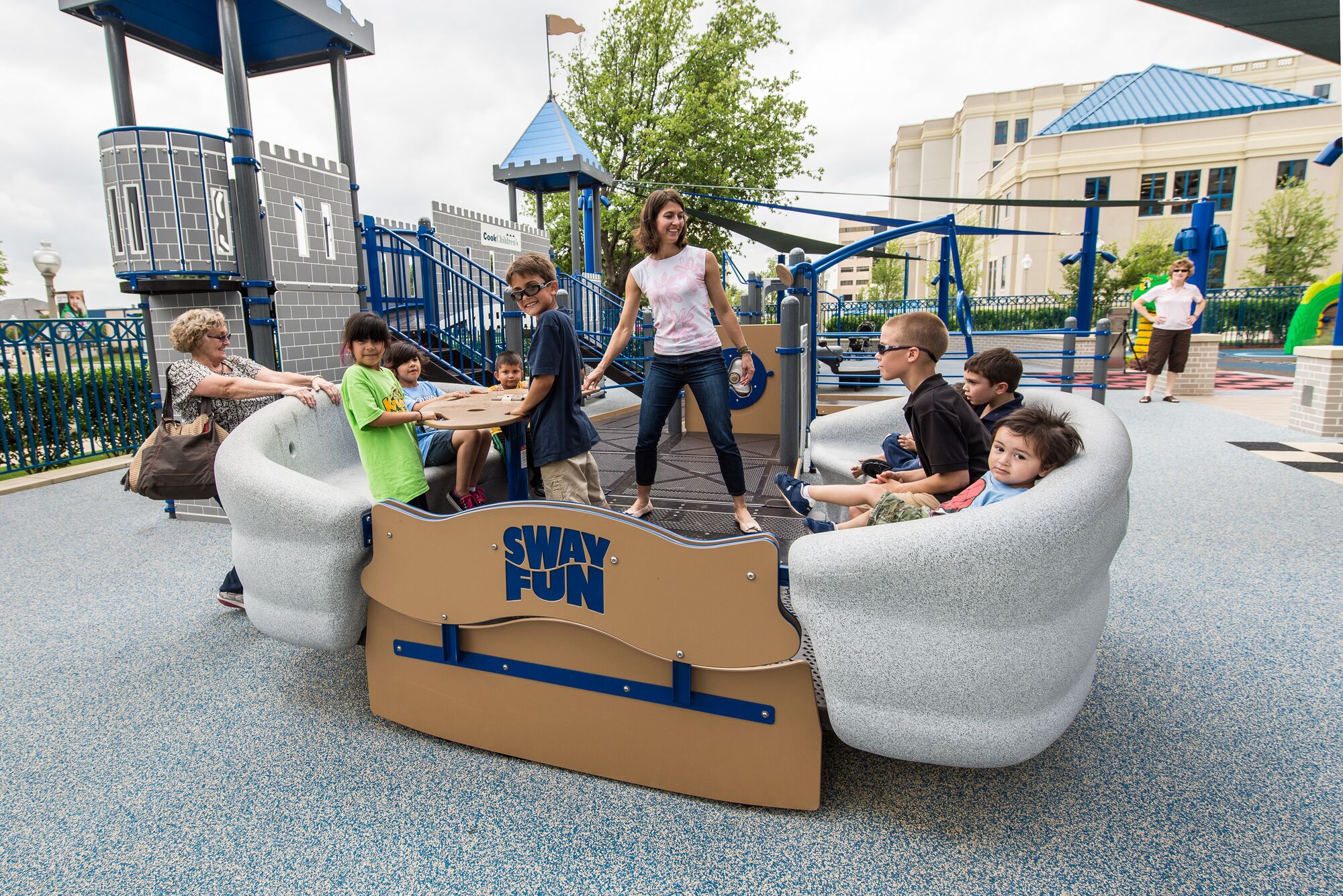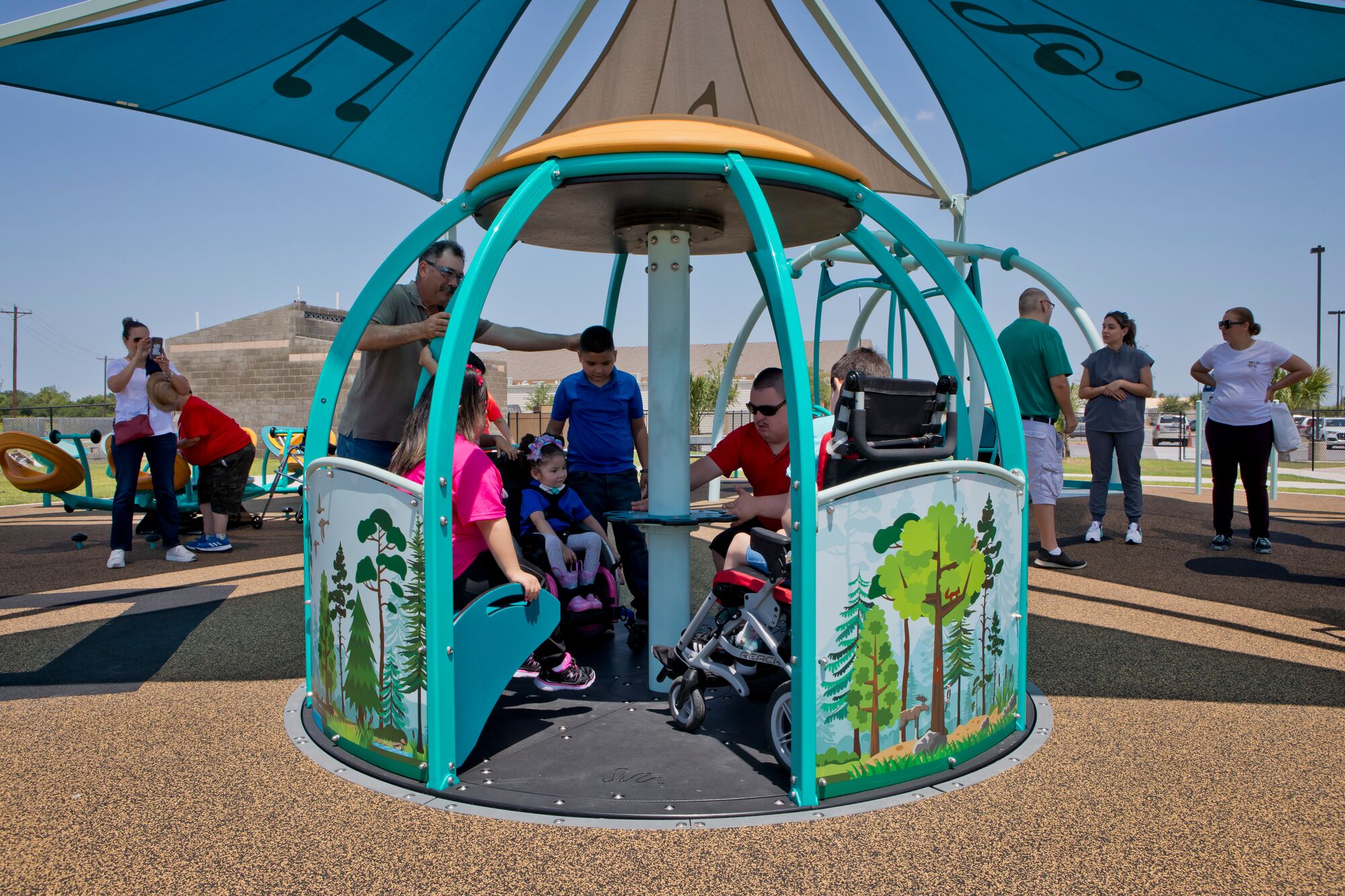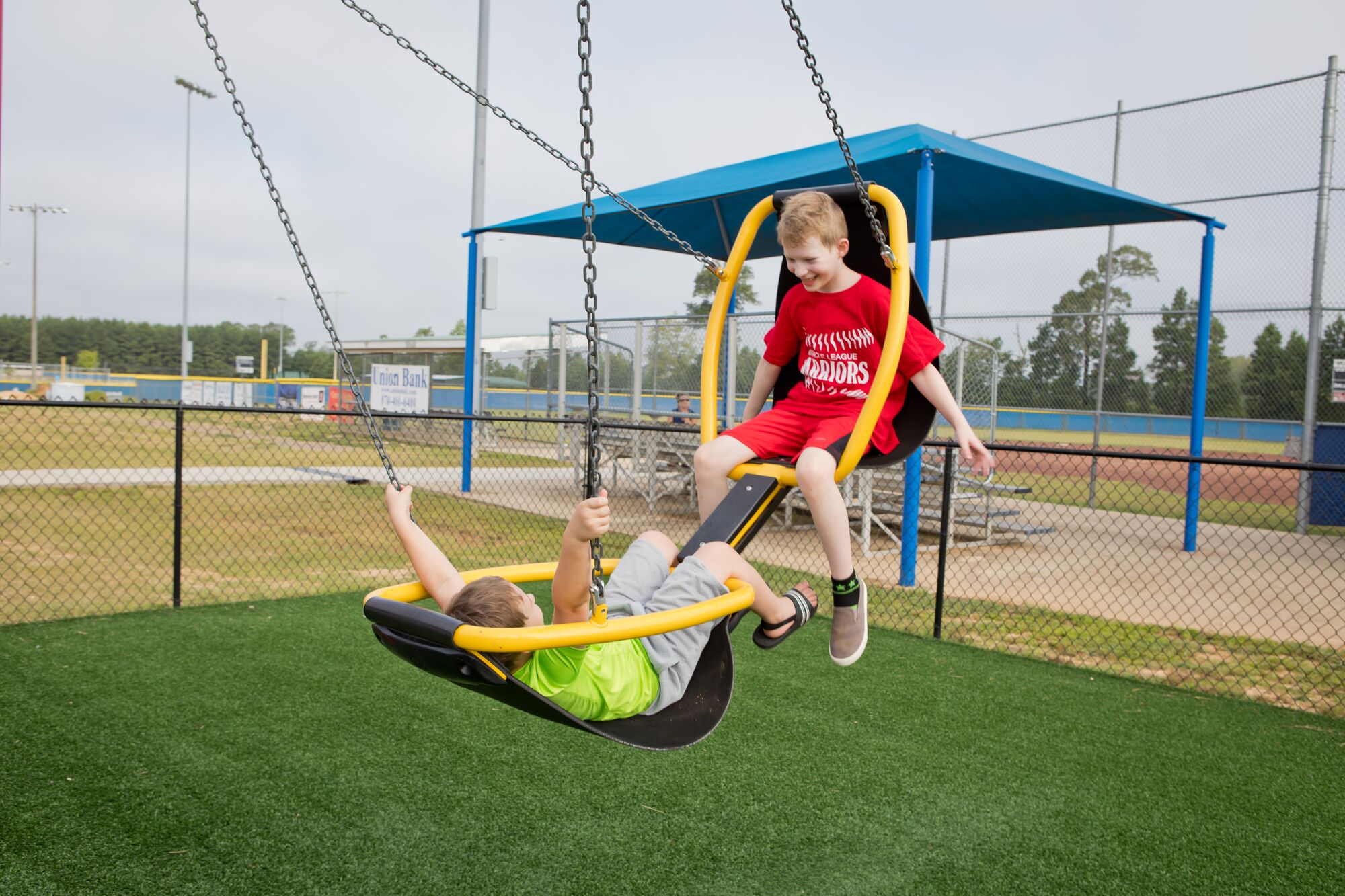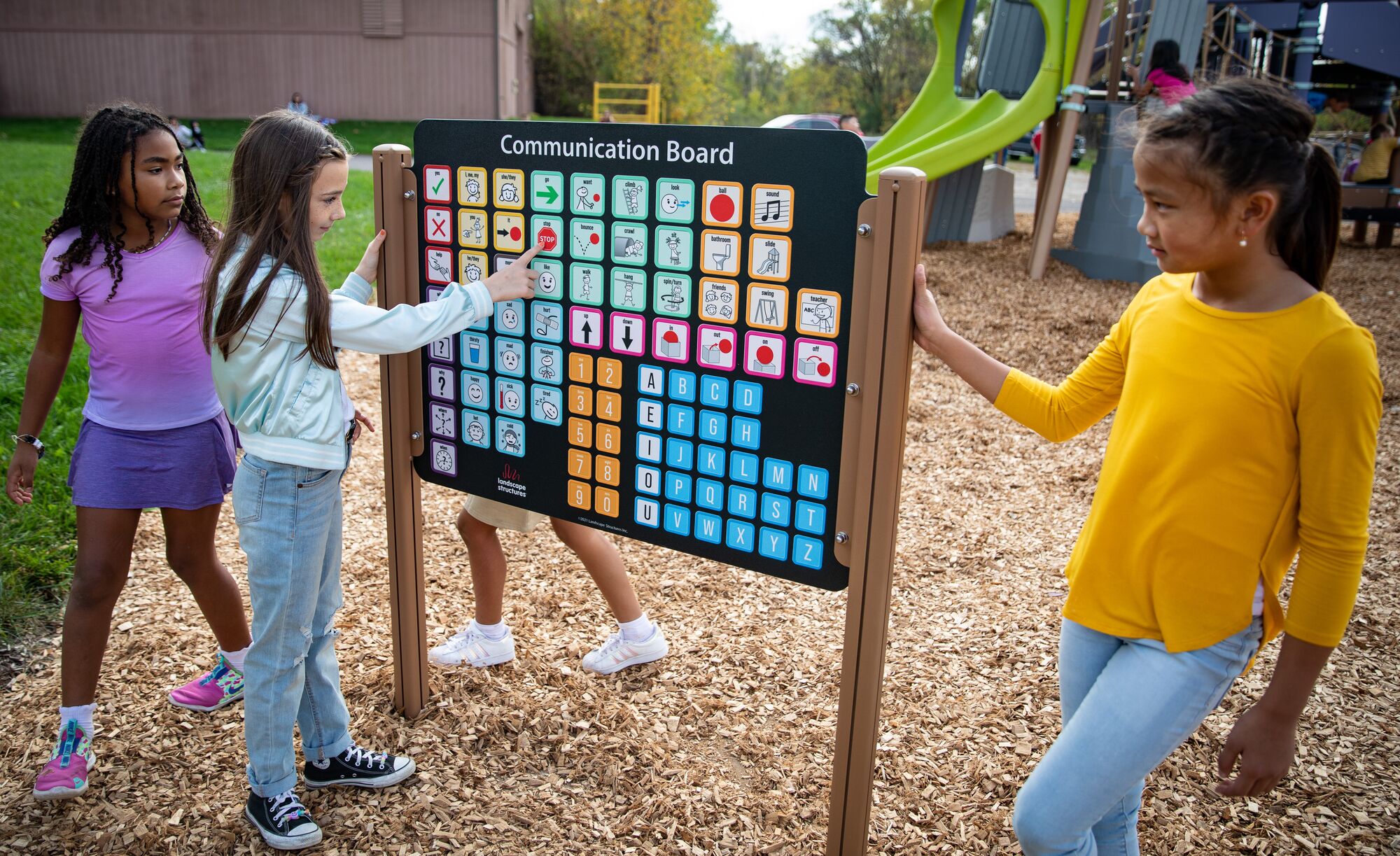At Landscape Structures, inclusion isn’t just a goal—it’s a promise. It’s a mindset that drives everything we do from design and development to the fun that happens on the playground. At the heart of this mission is a group of kids we call the Jr. Play Team, and we’re thrilled to introduce you to them!
This group of kids from the Twin Cities are helping us create a more inclusive world of play. They bring their lived experience and insight to help us build playgrounds that welcome everyone.
Designed by kids, for all kids
The Jr. Play Team is made up of children with a range of physical, cognitive and sensory disabilities. They bring invaluable feedback to our product development process. Through real-time play and honest conversation, they help us uncover what works, what needs improvement, and—most importantly—how play can feel more inclusive for every child.
“It’s not just about watching them play,” says Jill Moore, inclusive play specialist at Landscape Structures. “It’s about listening, observing, and learning from the kids and their caregivers. They show us what true inclusivity looks like in action.”
Playground testing, the Jr. Play Team way
Throughout 2024, the Jr. Play Team gathered to test prototype equipment, share their experiences and have a lot of fun. We invited the kids and their caregivers to engage with new designs while our team observed their movement, reactions and comfort levels.



Sometimes it was clear where the kids gravitated naturally. Other times, we watched closely as they struggled or hesitated, and we turned those moments into opportunities to do better.
Take our new product, Volo Aire™. During testing, some children who needed assistance climbing up to the second level loved lying on the net and feeling the movement of others around them. But when it was time to go, parents found it difficult to help them climb back down. The solution? Add slides at the second level, offering a fun and easy way out for anyone—regardless of ability. This thoughtful fix didn’t just support accessibility, it made the experience better for all kids while also providing a more comfortable and feasible option for the caregivers as well.



A president with a purpose: Meet John Buettner
In our latest video, you’ll meet John Buettner, president of the Jr. Play Team, as he shares what inclusion means to him. With wisdom and warmth beyond his years, John gives voice to the power of designing with—not just for—children with disabilities. Watch the video and see how the Jr. Play Team is shaping the future of play.
More than a team—a movement
The Jr. Play Team is more than just a group of play testers. They’re leaders, innovators and advocates for the kind of playgrounds we all want to see in our communities: welcoming, adventurous and truly inclusive.
Their ideas spark innovation. Their feedback helps shape our products. And their joy reminds us why we do what we do.
Know a kid who would love to help shape the future of play? We’re always looking to add to the Landscape Structures Jr. Play Team. If you know someone who’s passionate about inclusive play and making a difference, fill out this form and let the fun begin!



